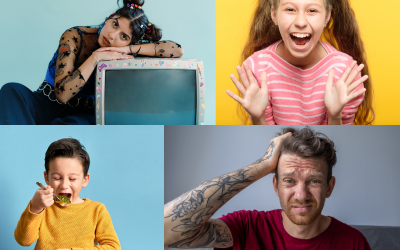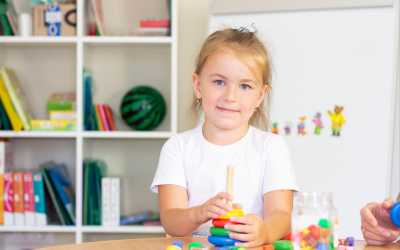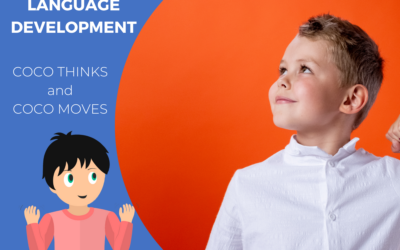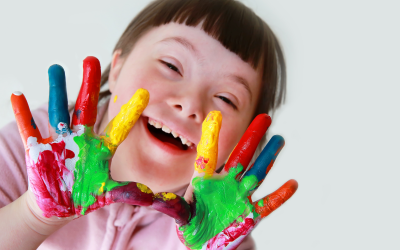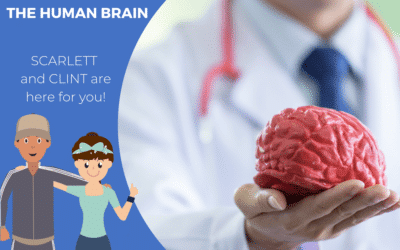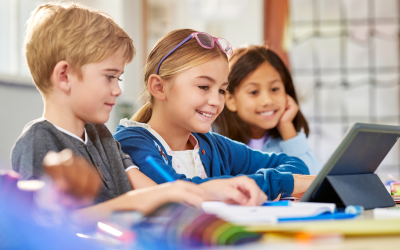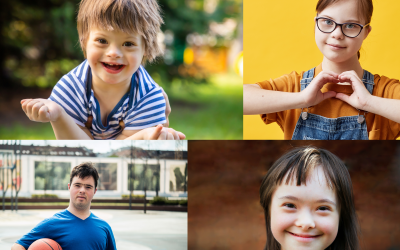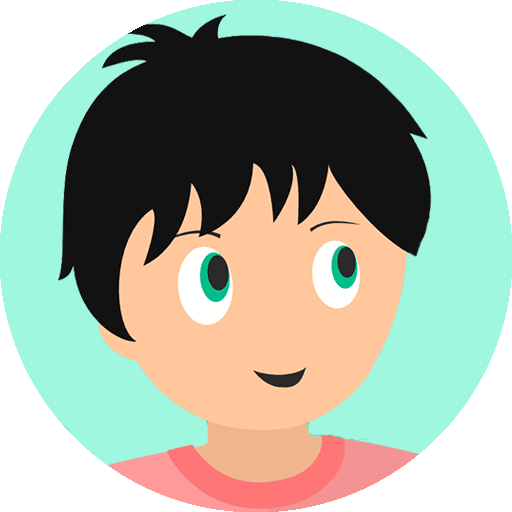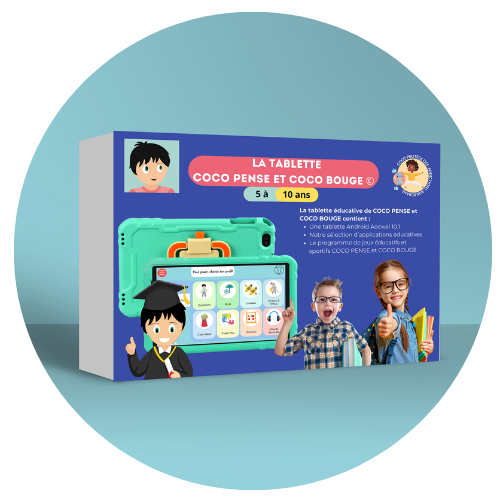Understanding ADHD and Dyslexia
Attention Deficit Hyperactivity Disorder (ADHD) and Dyslexia are two neurodevelopmental disorders that affect many children around the world. Understanding these disorders is essential for parents, teachers and healthcare professionals. In this article, we will explore in detail the definitions and characteristics of ADHD and Dyslexia, as well as provide current statistics on the prevalence of dual diagnosis.
Definitions and characteristics of ADHD
What is ADHD?
ADHD, or Attention Deficit Hyperactivity Disorder, is a neurodevelopmental disorder characterized by symptoms such as inattention, hyperactivity and impulsivity. Children with ADHD often have trouble concentrating, sitting still, following instructions and managing their behavior.
Characteristics of ADHD
- Inattention: Children with ADHD tend to be easily distracted, frequently forget details, and have difficulty concentrating on a task for long periods.
- Hyperactivity: They are often very restless, constantly on the move, and have trouble sitting still.
- Impulsivity: Children with ADHD may act without considering the consequences, leading to impulsive and inappropriate behaviour.
Definitions and characteristics of Dyslexia
What is Dyslexia?
Dyslexia is a specific reading disorder that affects an individual’s ability to read accurately and fluently. People with dyslexia have difficulty deciphering words, understanding the meaning of what they read, and spelling correctly.
Characteristics of Dyslexia
- Reading difficulties: People with dyslexia may have difficulty recognizing letters and sounds, making reading a laborious task.
- Spelling problems: The correct spelling of words can be a problem, even for simple words.
- Slow reading: Reading can be slow and require a lot of effort, which can lead to fatigue.
Statistics on the prevalence of dual diagnosis
ADHD and Dyslexia: A common dual diagnosis
It’s important to note that ADHD and Dyslexia can coexist in some individuals. Statistics show that up to 20-40% of children with Dyslexia also have ADHD symptoms. This dual diagnosis can make symptom management even more complex, requiring a multidisciplinary approach to treatment and support.
In conclusion, understanding ADHD and Dyslexia is essential to helping the children and adults affected. These disorders have distinct characteristics, but they can also overlap, creating unique challenges. As parents, teachers or healthcare professionals, it’s crucial to be informed about these disorders in order to provide appropriate support and improve quality of life for sufferers.
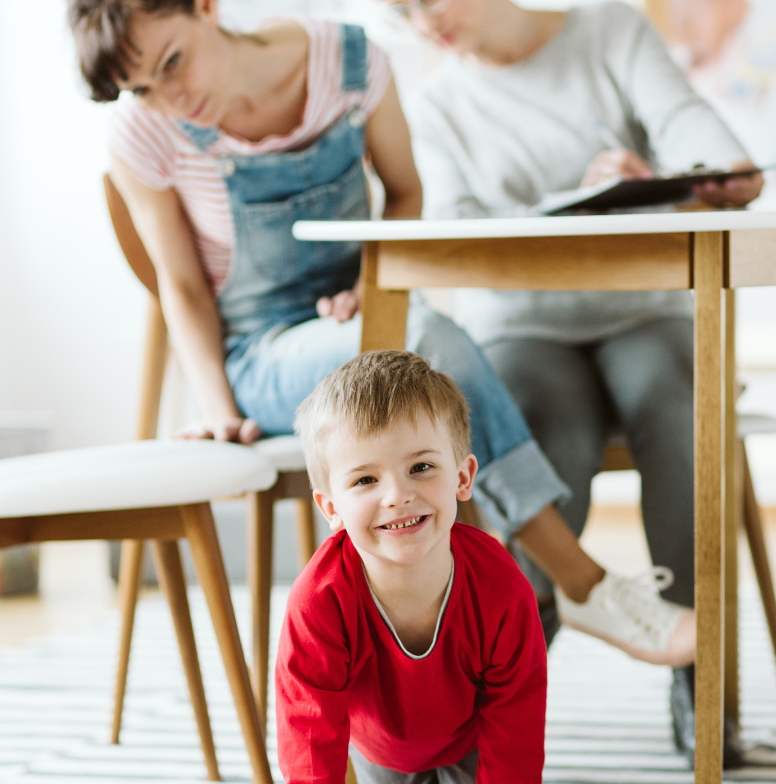
The Challenges of Coexisting ADHD and Dyslexia
Attention Deficit Hyperactivity Disorder (ADHD) and Dyslexia are two neurodevelopmental disorders frequently diagnosed in children. Although each disorder has its own distinct characteristics, it’s quite common to find children with both conditions simultaneously. The coexistence of ADHD and Dyslexia can pose particular challenges for children, their parents and educational professionals. In this article, we explore the impact on children’s learning and development, the associated emotional and social challenges, and poignant testimonials from parents and children coping with these disorders.

Impact on children’s learning and development
ADHD and Dyslexia have a significant impact on children’s learning and development. ADHD is characterized by difficulties in concentrating, sitting still and controlling impulses. Children with Dyslexia have difficulty reading, writing and spelling correctly. When these two disorders coexist, the challenges accumulate.
Difficulties in the classroom
In the classroom, children with ADHD and Dyslexia may have difficulty following instructions, concentrating on tasks and organizing their work. The reading and writing problems associated with Dyslexia can make accessing information even more difficult. This can lead to increased frustration and reduced self-confidence in these children.
Delayed development
ADHD and Dyslexia can also lead to developmental delay. Children may struggle to acquire literacy skills at an appropriate age. They may also encounter obstacles in developing social and communication skills, which can affect their ability to interact with their peers.
The associated emotional and social challenges
In addition to academic challenges, the coexistence of ADHD and Dyslexia can lead to significant emotional and social challenges for children.
Anxiety and depression
Children with these two disorders are more likely to develop anxiety and depression because of the difficulties they encounter at school and in their social interactions. They may feel isolated and different from their peers, which can affect their self-esteem.
Behavioral problems
ADHD can also lead to behavioral problems such as impulsivity and irritability. These behaviors can make it difficult to create and maintain friendships, which has an impact on the child’s social well-being.
Testimonials from parents and children
To better understand the challenges faced by children with both ADHD and Dyslexia, let’s hear from parents and children who have lived this reality.
Indeed, the coexistence of ADHD and Dyslexia presents unique challenges for children and their families. However, with the right support, these children can develop their skills, overcome obstacles and succeed in life. It’s essential that parents, teachers and healthcare professionals work together to provide a supportive learning environment adapted to their specific needs.
My son was diagnosed with ADHD and Dyslexia in elementary school. It’s been a difficult journey for him. Homework is often a source of frustration, and he has trouble keeping up in class. But we’ve worked with health and education professionals to find strategies to help her thrive despite these challenges. It’s important never to underestimate the potential of these children.
I always knew I was a little different. Dyslexia makes reading painful, and ADHD means I’m often in my own bubble. But over time, I’ve learned to manage these challenges. I’ve found friends who understand me, and I’m working hard to get good grades at school. It may be difficult, but I know I can do it.
COCO THINKS and COCO MOVES:
Your Help Program for ADHD and Dyslexia
Attention Deficit Hyperactivity Disorder (ADHD) and Dyslexia are complex challenges for children and their families. “COCO THINKS and COCO MOVES” is an innovative support program designed to meet the specific needs of these children. In this article, we will explore this program in detail, focusing on its presentation, its unique approach to tackling ADHD and Dyslexia, moving testimonials from families who have benefited from the program, the results and benefits observed, the progress noticed in participating children, the benefits for parents and teachers, as well as its long-term impact on children’s lives.
Detailed program presentation
The “COCO THINKS and COCO MOVES” program was created with a holistic approach to helping children with ADHD and Dyslexia. It combines innovative teaching methods, adapted physical activities and emotional support to offer participants a complete experience.
How it specifically addresses ADHD and Dyslexia
The program takes into account the unique needs of children with ADHD and Dyslexia by offering:
- Interactive learning sessions: Children learn in a fun way, with games and activities to stimulate their concentration.
- Encouraging physical activity: Sports activities are integrated into the program to channel children’s energy and promote their well-being.
- Emotional support: Group sessions and individual discussions help children manage their emotions and develop their self-esteem.
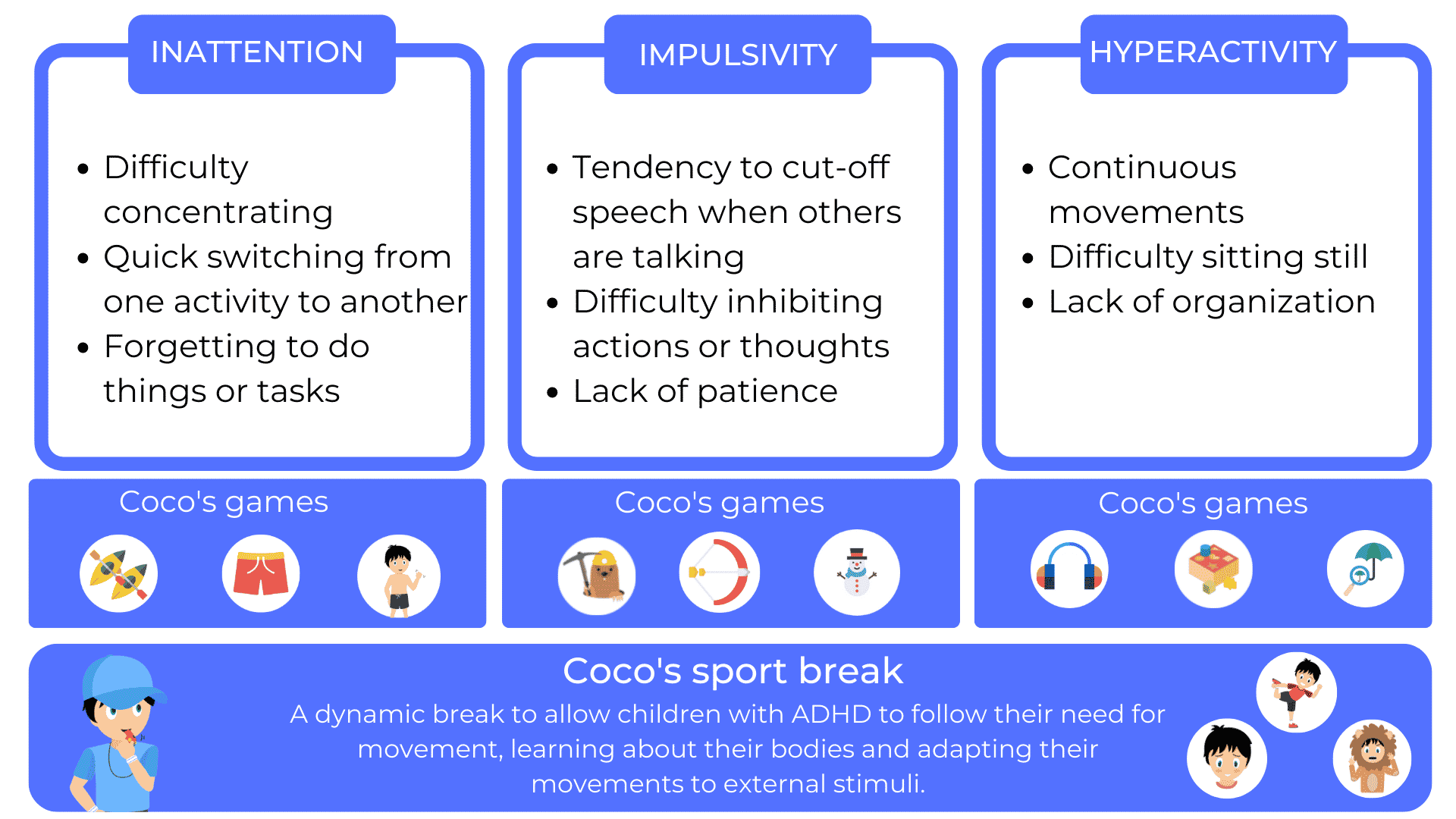
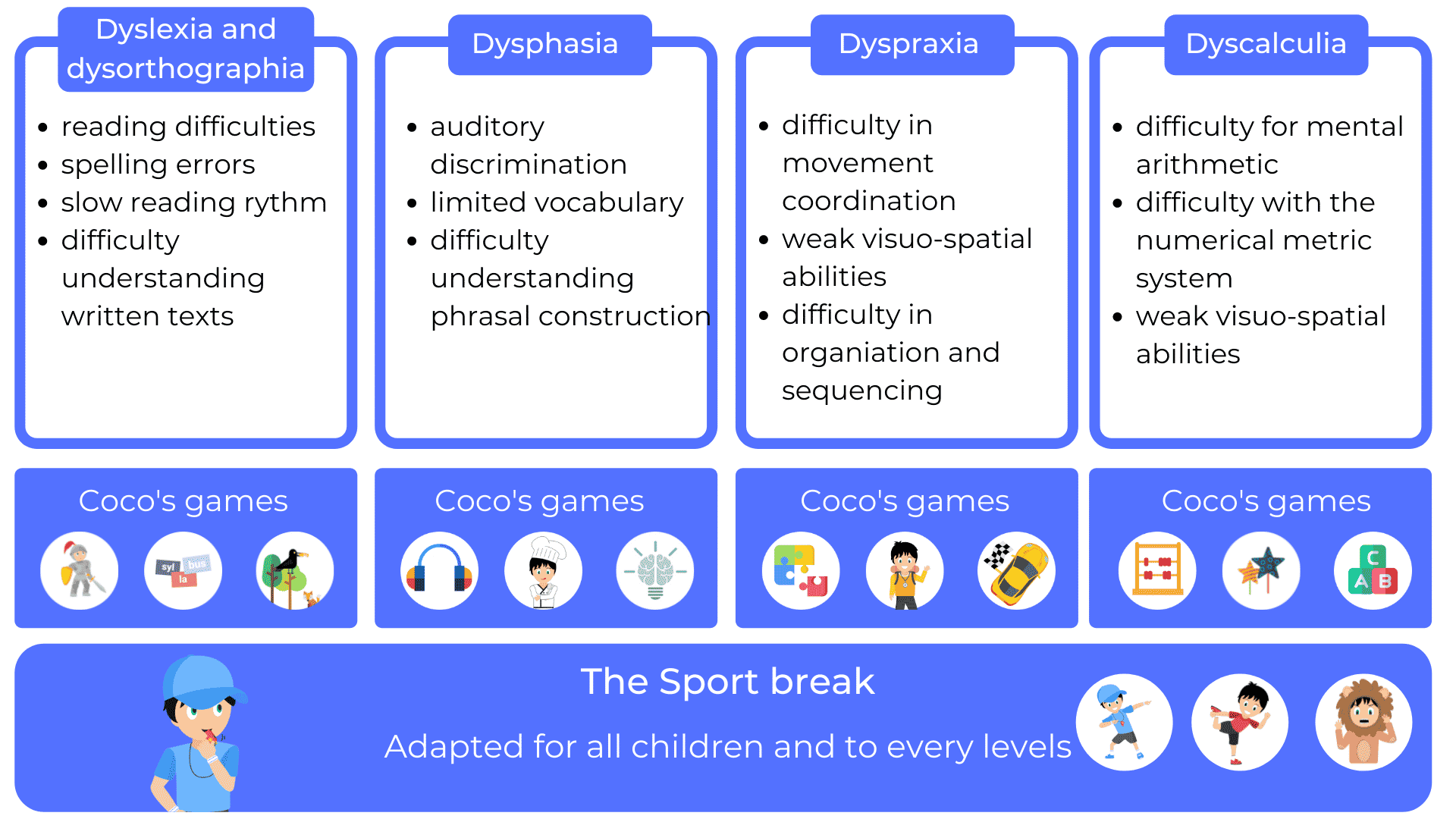
Testimonials from families who have benefited from the program
The testimonials from families who have taken part in the “Coco Pense et Coco Bouge” program are a moving testament to its effectiveness.
When Lucas was diagnosed with ADHD and Dyslexia, we were distraught. But the “Coco Pense et Coco Bouge” program was a revelation. Lucas has blossomed like never before. His results at school have improved, and he’s more confident. Thanks to the entire team who made this program a reality.
Our daughter Léa has made enormous progress thanks to “Coco Pense et Coco Bouge”. Her reading difficulties seemed insurmountable, but this program gave her the tools she needed. The group workshops also strengthened her social skills. We’re delighted with the results.
Results and benefits
The “COCO THINKS and COCO MOVES” program has brought concrete results and significant benefits for participating children.
Academic improvements
Children who followed the program showed significant improvements in their reading, writing and math skills. Their teachers report better classroom participation and greater confidence in their work.
A boost to self-esteem
The Mime an Emotion play sessions have enabled the children to develop stronger self-esteem. They are more comfortable expressing their needs and emotions, which has a positive impact on their relationships with their peers.
Benefits for parents and teachers
This program not only benefits the children, but also the parents and teachers around them.
Relief for parents
Parents receive support and education to better understand their children’s needs. This reduces family stress and strengthens family ties.
Better prepared teachers
Teachers work with the program to adapt their teaching to the children’s needs. They see a significant improvement in classroom management and academic performance.
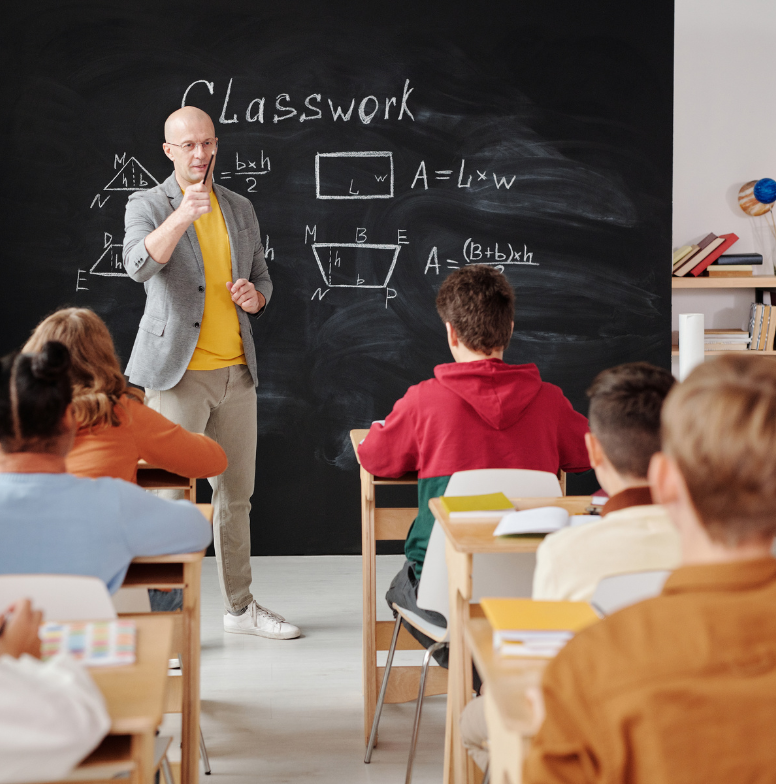
The long-term impact on children’s lives
Preparing for a bright future
The skills and confidence acquired through the program pave the way for a future in which these children can achieve their academic and personal goals.
Better social integration
Children are better prepared for positive social relationships, which helps them integrate into society.
Join us to discover how “COCO THINKS and COCO MOVES” can be a real turning point in the lives of children with ADHD and Dyslexia, as well as their families and teachers. The results speak for themselves, and the success of this program continues to grow.

How to support Coco Thinks and Coco Moves
“COCO THINKS and COCO MOVES” is an innovative program designed to support children with ADHD and Dyslexia in their development. If you’d like to contribute to this worthy cause and help these children overcome their challenges, there are several ways you can support “COCO THINKS and COCO MOVES”.
How schools and communities can get involved
School partnerships
Schools can play a key role by collaborating with “Coco Pense et Coco Bouge”. Teachers and educational staff can work closely with the program to identify children who could benefit from its services. In addition, schools can organize educational workshops to raise awareness among students and parents of the challenges of ADHD and Dyslexia.
Community support
Local communities can also get involved by organizing fundraising events, fairs or sporting activities in support of “COCO THINKS and COCO MOVES”. What’s more, encouraging awareness in the community can help eliminate the stigma around these disorders and foster inclusion.
Associations that can help you :
- CHADD (Children and Adults with Attention-Deficit/Hyperactivity Disorder)
- Understood
- International Dyslexia Association (IDA)
- Learning Disabilities Association of America (LDA)
- National Center for Learning Disabilities (NCLD)
- Attention Deficit Disorder Association (ADDA)
- Dyslexia Action
- The Dyslexia-SPELD Foundation
USE the COCO THINKS and COCO MOVES app at school or at home
The COCO THINKS and COCO MOVES app contains more than 30 educational games to work on English, math, logic, memory or attention.
In addition, the application imposes a sports break every 15 minutes of screen time to teach a measured use of screens.
Much smarter than a parental control!
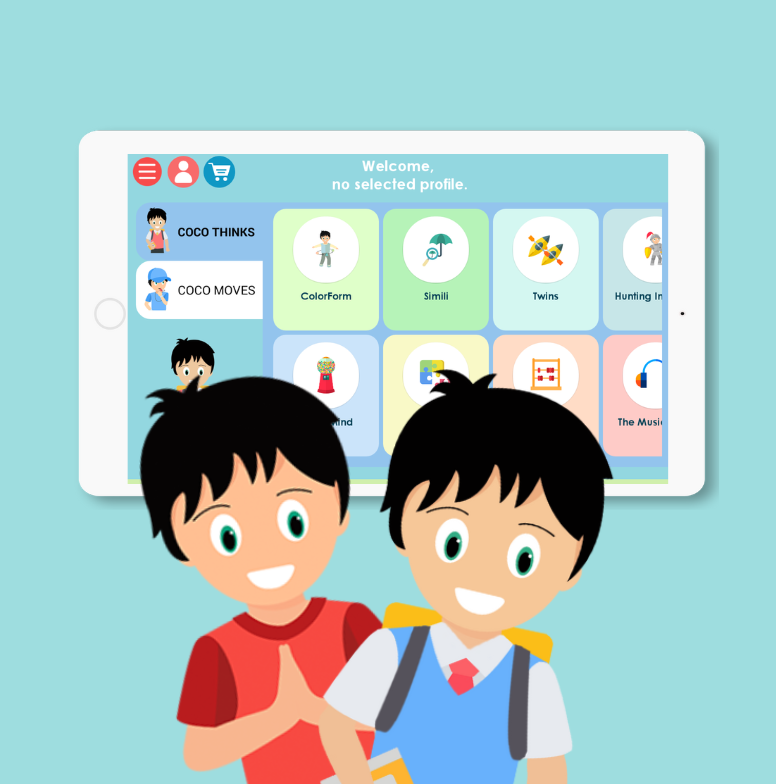
Other articles that might interest you:
Supporting children with autism
Dynseo proposesSUPPORTING CHILDREN WITH AUTISM with COCO THINKS AND COCO MOVESDynseo and its team are very much...
Supporting DYS children with COCO THINKS and COCO MOVES
Dynseo proposesDYS disorders with COCO THINKS and COCO MOVESOur educational and pedagogical games program COCO THINKS...
Language development
Children communicate from birth with movements, crying, looking at each other or with smiles. After only a few months,...
Supporting children with Down Syndrome with Coco
Dynseo proposesDOWN SYNDROME with COCODown syndrome is a non-hereditary chromosomal abnormality that leads to the...
Supporting people after a stroke
Dynseo proposesStroke with CLINT, your brain training coachThe Dynseo team is very involved in helping people who have...
Supporting someone with Alzheimer’s
In this guide, we will detail how SCARLETT can be used for supporting someone with Alzheimer's. SCARLETT is a...
10 myths about the human brain you didn’t know
The brain is an incredible muscle, however there are many things we do not know, and what we do know is not always...
Using Digital Tools to Support Students with Special Educational Needs
Special Educational Needs (SEN) encompass a wide range of learning difficulties and disabilities that can hinder a...
Down Syndrome and Communication: Facilitating Interaction with Visual and Interactive Supports
When we think about Down syndrome, we often recognize it as a genetic condition that affects physical and cognitive...
How to Track Progress in People with Down Syndrome Using Digital Tools
Down syndrome, a genetic condition caused by the presence of an extra chromosome 21, affects approximately 1 in every...


